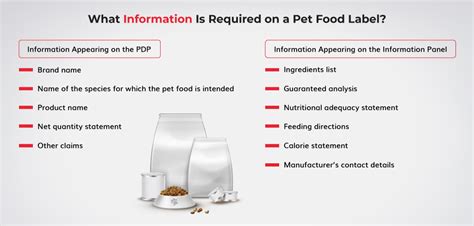Introduction
The pet food industry is a multi-billion dollar industry that continues to expand worldwide. With this growth has come an increased demand for regulations to ensure the safety and quality of pet food products. The United States Food and Drug Administration (FDA) is the primary regulatory agency responsible for overseeing the pet food industry in the United States. The FDA has established a comprehensive set of regulations that manufacturers of pet foods must comply with, collectively known as the Current Good Manufacturing Practices (CGMPs).

FDA’s Current Good Manufacturing Practices (CGMPs) for Pet Food
The FDA’s CGMPs for pet food are designed to ensure that pet food production facilities operate in a sanitary fashion, that the ingredients used are safe and free from contaminants, and that the finished product is properly labeled and packaged. These regulations apply to all pet food manufacturers, whether they produce wet food, dry food, treats, or supplements.
Key Elements of the CGMPs
The CGMPs for pet food are a comprehensive set of regulations that cover every aspect of pet food manufacturing, including:
-
Facility and equipment sanitation: Pet food manufacturing facilities must be clean and well-maintained, with adequate sanitation procedures in place to prevent cross-contamination. Equipment used for processing pet foods must also be properly cleaned and sanitized.
-
Ingredient safety: Ingredients used in pet food must be safe and free from contaminants. The FDA has established a list of acceptable ingredients for pet food, and manufacturers must ensure that all ingredients used comply with these standards.
-
Finished product labeling and packaging: Pet food labels must include the product name, the name and address of the manufacturer, the net weight of the product, the ingredients used, the nutritional content of the product, and any special feeding instructions. Pet food packaging must also be designed to protect the product from contamination and damage.
Safety Considerations for Pet Food Products
In addition to the CGMPs, the FDA also takes a proactive approach to ensuring the safety of pet food products. The agency regularly monitors the pet food industry for any potential safety issues, and it has the authority to recall any pet food products that are found to be unsafe.
The Importance of Compliance with FDA Regulations
Compliance with FDA regulations is essential for all pet food manufacturers. Failure to comply with these regulations can result in enforcement actions by the FDA, such as product recalls, fines, or even criminal charges. In addition, pet food manufacturers who do not comply with FDA regulations may lose the trust of consumers, which can damage their reputation and their bottom line.
Conclusion
The FDA’s regulations for pet food are designed to protect the health and safety of our beloved pets. By complying with these regulations, pet food manufacturers can help ensure that the products they sell are safe, nutritious, and free from contaminants.





















